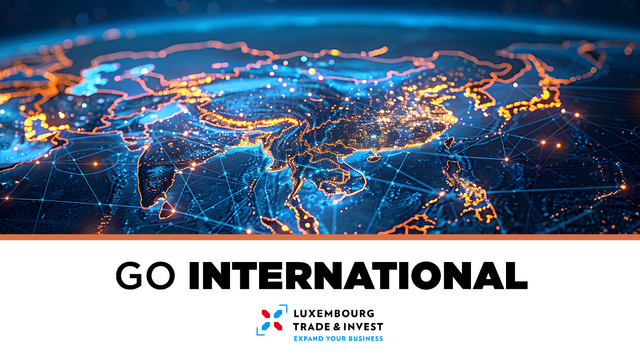
Kapitel
The Indus Valley civilization, one of the world's oldest, flourished during the 3rd and 2nd millennia B.C. and extended into northwestern India. Aryan tribes from the northwest infiltrated the Indian subcontinent about 1500 B.C.; their merger with the earlier Dravidian inhabitants created the classical Indian culture. The Maurya Empire of the 4th and 3rd centuries B.C. - which reached its zenith under ASHOKA - united much of South Asia. The Golden Age ushered in by the Gupta dynasty (4th to 6th centuries A.D.) saw a flowering of Indian science, art, and culture. Islam spread across the subcontinent over a period of 700 years. In the 10th and 11th centuries, Turks and Afghans invaded India and established the Delhi Sultanate. In the early 16th century, the Emperor BABUR established the Mughal Dynasty, which ruled India for more than three centuries. European explorers began establishing footholds in India during the 16th century.
By the 19th century, Great Britain had become the dominant political power on the subcontinent. The British Indian Army played a vital role in both World Wars. Years of nonviolent resistance to British rule, led by Mohandas GANDHI and Jawaharlal NEHRU, eventually resulted in Indian independence, which was granted in 1947. Large-scale communal violence took place before and after the subcontinent partition into two separate states - India and Pakistan. The neighboring nations have fought three wars since independence, the last of which was in 1971 and resulted in East Pakistan becoming the separate nation of Bangladesh. India's nuclear weapons tests in 1998 emboldened Pakistan to conduct its own tests that same year. In November 2008, terrorists originating from Pakistan conducted a series of coordinated attacks in Mumbai, India's financial capital. Despite pressing problems such as significant overpopulation, environmental degradation, extensive poverty, and widespread corruption, economic growth following the launch of economic reforms in 1991 and a massive youthful population are driving India's emergence as a regional and global power.
Source: The CIA World Factbook - India
Kennzahlen
- Fläche
- 3,287,263 km2
- Bevölkerung
- 1,339,330,514 (July 2021 est.)
- Regierungsform
- federal parliamentary republic
- Sprachen
- Hindi 43.6%, Bengali 8%, Marathi 6.9%, Telugu 6.7%, Tamil 5.7%, Gujarati 4.6%, Urdu 4.2%, Kannada 3.6%, Odia 3.1%, Malayalam 2.9%, Punjabi 2.7%, Assamese 1.3%, Maithili 1.1%, other 5.6%
- BIP
- $2.623 trillion (2020 est.)
- Wachstumsrate
- -7.9% (2020 est.)
- HDI
- 131
- Hauptstadt
- New Delhi
Makroökonomische Indikatoren
Growth is increasing, making India the fastest-growing G20 economy. Investment and exports, supported by the smoother implementation of the new goods and services tax (GST), are becoming major growth engines. Inflation will hover within the target band, with upside risks reflecting rising oil prices and an increase in housing allowance for public employees. The current account deficit will increase. Job creation in the formal sector will remain sluggish, leaving the vast majority of workers in low-productivity, low-paid activities.
Fiscal and monetary policies are projected to remain broadly neutral. To reduce the relatively high public debt-to-GDP ratio, containing contingent fiscal liabilities is key, including through better governance of public enterprises. Better risk assessment in banks would allow allocating financial resources to the best projects and avoiding a new increase in non-performing loans. Investing more in education and training, combined with a modernisation of labour laws, would help create better jobs and make growth more inclusive.
Source: OECD - Economic Forecast
IMF Statistics:
| Subject descriptor | 2021 | 2022 | 2023 | 2024 | 2025 |
|---|---|---|---|---|---|
|
Gross domestic product, constant prices Percent change (Units) |
9.690 |
6.987 |
8.153 |
7.021 |
6.461 |
|
Gross domestic product, current prices U.S. dollars (Billions) |
3,167.271 |
3,353.471 |
3,567.552 |
3,889.130 |
4,271.922 |
|
Gross domestic product per capita, current prices U.S. dollars (Units) |
2,250.179 |
2,366.310 |
2,497.188 |
2,697.563 |
2,936.823 |
|
Inflation, average consumer prices Percent change (Units) |
5.506 |
6.653 |
5.361 |
4.374 |
4.097 |
|
Volume of imports of goods and services Percent change (Units) |
19.371 |
9.944 |
-1.201 |
4.416 |
6.045 |
|
Volume of exports of goods and services Percent change (Units) |
19.732 |
9.679 |
0.381 |
3.500 |
4.065 |
|
Unemployment rate Percent of total labor force (Units) |
|||||
|
Current account balance U.S. dollars (Billions) |
-38.693 |
-66.982 |
-23.211 |
-44.563 |
-56.012 |
|
Current account balance Percent of GDP (Units) |
-1.222 |
-1.997 |
-0.651 |
-1.146 |
-1.311 |
Source: IMF Statistics - India
Luxemburg und das Land
Existing conventions and agreements
Non double taxation agreement
In order to promote international economic and financial relations in the interest of the Grand Duchy of Luxembourg, the Luxembourg government negotiates bilateral agreements for the avoidance of double taxation and prevent fiscal evasion with respect to Taxes on Income and on fortune with third countries.
- Convention from 02.06.2008 (Memorial 2009, A No.137, p.1912)
- Effective as of 01.01.2010 (Memorial 2009, A No.137, p.1912)
Air Services agreement
- Convention from, 8.1.2001 (Memorial 2003, A, p. 1054 )
The record of the Department of Treaties: not in force yet.
Weitere Informationen
Foreign Trade
The Statec Foreign Trade statistics provide information on the trade of goods - by product and by country. This information is collected respectively through the INTRASTAT declaration and on the basis of customs documents.
You can see the statistics on the website of the Statec.
Contact points in India
Embassy of the Grand Duchy of Luxembourg in India
Ambassador with residence in New Delhi: H.E. Mr Jean-Claude KUGENER
Embassy of the Grand Duche de Luxembourg in New Delhi
84, Jor Bagh
New Delhi – 110003
India
Tel.: (+91-11) 49 98 66 00
Fax: (+91-11) 41 52 52 01
E-Mail: newdelhi.amb@mae.etat.lu
Website: newdelhi.mae.lu
Honorary Consuls
Honorary Consul with jurisdiction over the states of Arunachal Pradesh, Assam, Bengale-Occidental, Bihar, Chhattisgarh, Jharkhand, Manipur, Meghalaya, Mizoram, Nagaland, Orissa, Sikkim and Tripura:
Mr Rajat DALMIA
502, Mangalam-'A'
24, Hemanta Basu Sarani
Kolkata 700 001
India
Tel.: (+91) 33 2262 2378 / (+91) 33 2230 8994
E-Mails: info@luxmconslcal.com / luxmcons.cal@gmail.com
Honorary Consul with jurisdiction over the States of Tamil Nadu and Kerala:
Mr Seturaman MAHALINGAM
22 Karpagambal Nagar
Mylapore
Chennai 600 004
India
Tel.: (+91) 44 2498 7145 / (+91) 44 2498 7745
E-Mail : chennai@consul-hon.lu
Honorary Consul with jurisdiction over the States of Maharashtra, Goa, and Gujarat:
Mr Perses BILIMORIA
404 Shards Chambers
33 New Marine Lines
Mumbai 400 020
India
Tel.: (+91) 22 40627200
E-Mail: mumbai@consul-hon.lu
Honorary Consul with jurisdiction over the State of Karnataka:
Mr Suresh VASWANI
2nd Floor Umiya Landmark
10/7 Lavelle Road
Bengalore 560001
India
Tel.: (+91) 80 22485520
E-Mail: bengaluru@consul-hon.lu
Source: Ministry of Foreign Affairs Luxembourg
Country risk as defined by Office du Ducroire for India
Ducroire is the only credit insurer covering open account deals in over 200 countries. A rating on a scale from 1 to 7 shows the intensity of the political risk. Category 1 comprises countries with the lowest political risk and category 7 countries with the highest. Macroeconomics experts also assess the repayment climate for all buyers in a country.
Link: Ducroire office - Country Risk for India
Other useful links
- CIA World factbook on India
- Indo-Belgian-Luxembourg Chamber of Commerce and Industry
- Indian Business Chamber of Luxembourg
- Doing Business in India
- Economic Freedom Index - India
- Das ist Indien
- L'Inde sur le site de l'AWEX
- 'Luxembourg: on a green path', India Empire, February 2020
- 'India - Luxembourg: Vibrant investment in long term ties', Fortune India Exchange
- 'Looking forward to welcoming more Indians', Travel and Hospitality, March 2019
- 'Luxembourg and India have become strong partners and have built excellent relations', BusinessDigest, September 2019
- 'Luxembourg & India - Ties that bind', India Empire, April 2019




